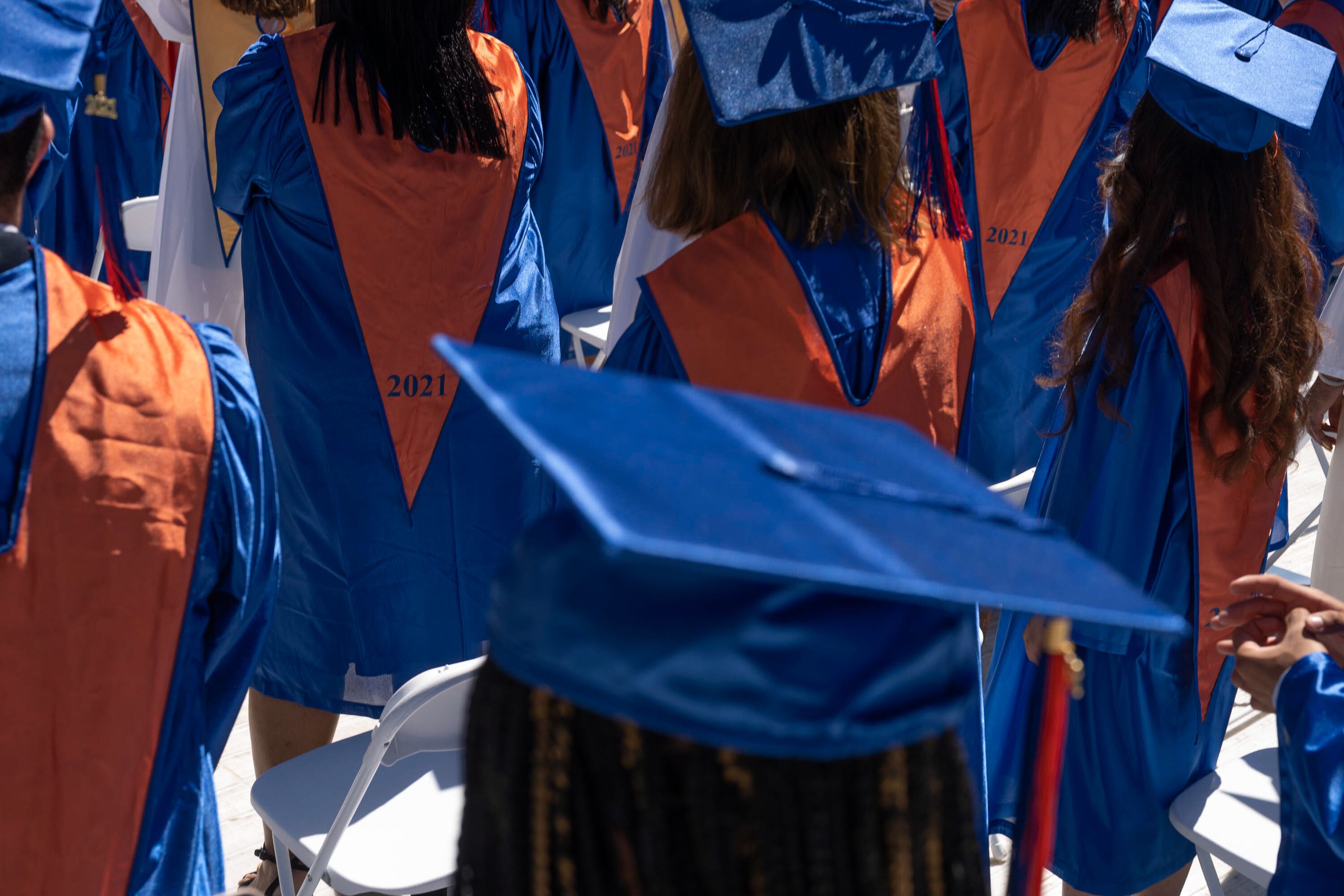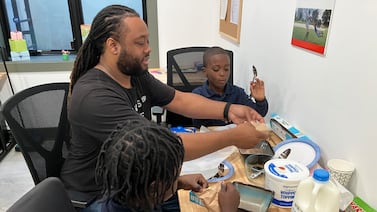Colorado and many school districts in the state saw higher graduation rates for the class of 2022 than before the pandemic, even as students had to meet new graduation requirements.
But the dropout rate also increased to its highest level in four years — a sign that schools are still struggling to engage students and still dealing with the fallout from pandemic-era schooling.
State leaders say districts need to dig into their data to understand their own patterns, since the trend isn’t typical. In at least one district, Harrison, leaders say they are seeing some payoff for programs started before the pandemic.
The Colorado Department of Education published graduation and dropout rates for the 2021-22 school year on Tuesday. Statewide, 82.3% of the class of 2022 graduated on time last spring, up from 81.7% in 2021 when the rate dipped for the first time in a decade.
The graduation rate changes this year also meant a reduction in some gaps for marginalized groups. Students with disabilities who are on an Individualized Education Program, for instance, have had big jumps in their graduation rates since the spring of 2020 when the pandemic started. Statewide, these students had a graduation rate of 67.9%, up from 59.2% for the class of 2019.
Looking at district-level rates, about half of all Colorado districts had graduation rates above what they had in 2019, while another half had still not bounced back since dipping during the pandemic. That trend held true among metro-area districts and districts with high numbers of students of color.
Among districts in the metro area, the ones with the largest graduation rate increases, of about 6 percentage points compared to their 2019 rates, were the 27J school district in Brighton, Mapleton, Adams 14, and Englewood. Denver’s graduation rate went up in 2022 to 76.5%, a 5.6 percentage point increase from 2019.
The state’s dropout rate, meanwhile, which counts how many seventh through 12th grade students disenroll from schools, went up to 2.2%. The rate had been decreasing steadily for years, and had held steady during the pandemic so far. It was last this high in the 2017-18 school year.
Steve Dobo, founder of Zero Dropouts, a consultant that works with various school districts, said that although he hadn’t seen the numbers, he wasn’t surprised to know dropout rates increased.
“We hope that we’re going to figure this out, but it is still happening,” Dobo said of this fall semester. “We have kids that come to school three times a week.”
When the pandemic began, students in the class of 2022 were in 10th grade and had to finish the year remotely after sudden school closures. But they had already had the chance to start high school and learn the routines in-person, leaders say. Schools have had a bigger challenge getting them to re-engage now that schools are open full time.
Tracking students may help reduce dropout rates
In the Harrison school district, where about 75% of students qualify for free or reduced-price lunches, a measure of poverty, the graduation rate increased, but hasn’t recovered to what it was pre-pandemic. Dropout rates have only slightly increased to 1.6%, still below the state average.
Superintendent Wendy Birhanzel said that dropout rates have been kept low in Harrison in part because of work that had just started prior to the pandemic such as an early warning system that tracks multiple risk factors for students starting in middle school. It started five years ago, but kicked into more intensive use three years ago at the start of the pandemic.
“We knew kids’ focus was going to shift away so we knew that we had to be the ongoing support and really figure out what’s happening,” Birhanzel said.
Administrators meet quarterly to discuss what supports students who are flagged as high risk are getting and who is reaching out to them.
Birhanzel also credits the Harrison district’s implementation of graduation coaches at each high school to help students navigate their new requirements.
Colorado’s new graduation requirements were pushed back a year because of the disruptions of the beginning of the pandemic including the pause in state testing. But for the state’s 2022 graduating class the new requirements went into effect, meaning students had to show competency in English and math, in addition to credits they may need to earn based on district guidelines.
The state approved a long list of ways students can show that competency, and each district was to establish its own guidance for students using that list.
Johann Liljengren, the state’s director of dropout prevention and student re-engagement office, said officials saw the most popular way for students to meet the requirement was through the SAT test, which is a required test 11th graders take already.
In 2021, when the class of 2022 was in 11th grade, about 36% of students who took the SAT met or exceeded expectations in math and 60% met or exceeded the expectations for the English test, though the score needed to show proficiency for graduation can be lower.
Students relying on that test score to meet the graduation requirements and who didn’t meet the minimum necessary scores had a limited time frame to show mastery through another way in their final year of high school. It might have included taking an Advanced Placement course and earning at least a 2 out of 5 on the exam, passing a college level course, or creating a capstone project.
So far, the majority of students who struggled to graduate were missing credits after failing classes, Birhanzel said, not because they struggled to meet new requirements.
Students need to pay attention to whether they’re on track to graduate starting in ninth grade. It might be a lot to expect 14-year-olds to think about how they’ll show mastery to meet graduation requirements, but Birhanzel said the district is going to work to help students learn about their options and keep themselves on track.
As Dobo of Zero Dropouts talks to districts about how to improve engagement to reduce dropout rates and increase graduation rates, he also believes things need to change.
Everyone is still figuring out what will work best, said Dobo, noting that students need to be motivated to be in school in person.
Schools may need to tweak work to make the most of the learning for students on any given day, Dobo says. When teachers might have assigned a multiple-day team project before, he now suggests only one-day team projects, because it’s likely the same students won’t be there consistently.
Liljengren said he tells district officials that they need to look closely at their data because patterns are changing — such as how the graduation rate and dropout rate are going up at the same time — and there’s more variability, meaning more districts have unique patterns to the state trend. It’s likely districts and schools will be identifying needs they may not have had in the past, he said.
“COVID hit us hard and we’re going to see the implications for a while still,” Birhanzel said. “We have the most important job ahead of us. We will need the support of our community. This has got to be a community effort.”
Look up your school or district’s four-year rate below:
Correction: This story has been updated to reflect that Zero Dropouts is not a nonprofit organization. It is a for-profit social enterprise.
Yesenia Robles is a reporter for Chalkbeat Colorado covering K-12 school districts and multilingual education. Contact Yesenia at yrobles@chalkbeat.org.







